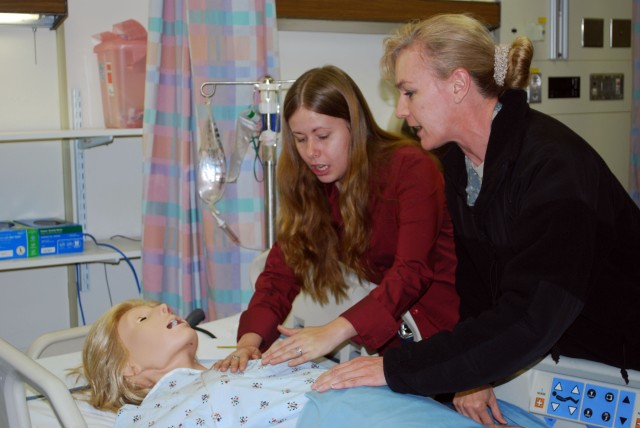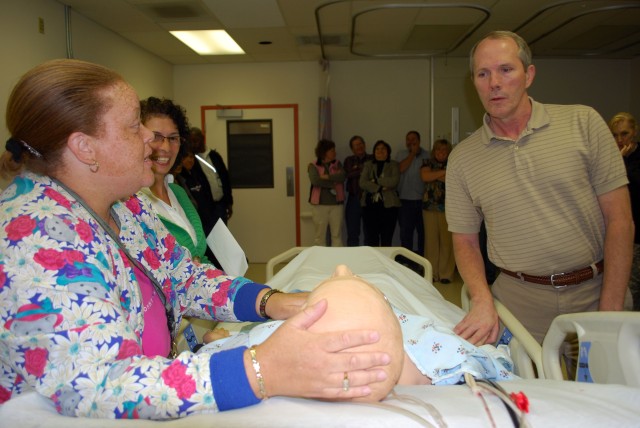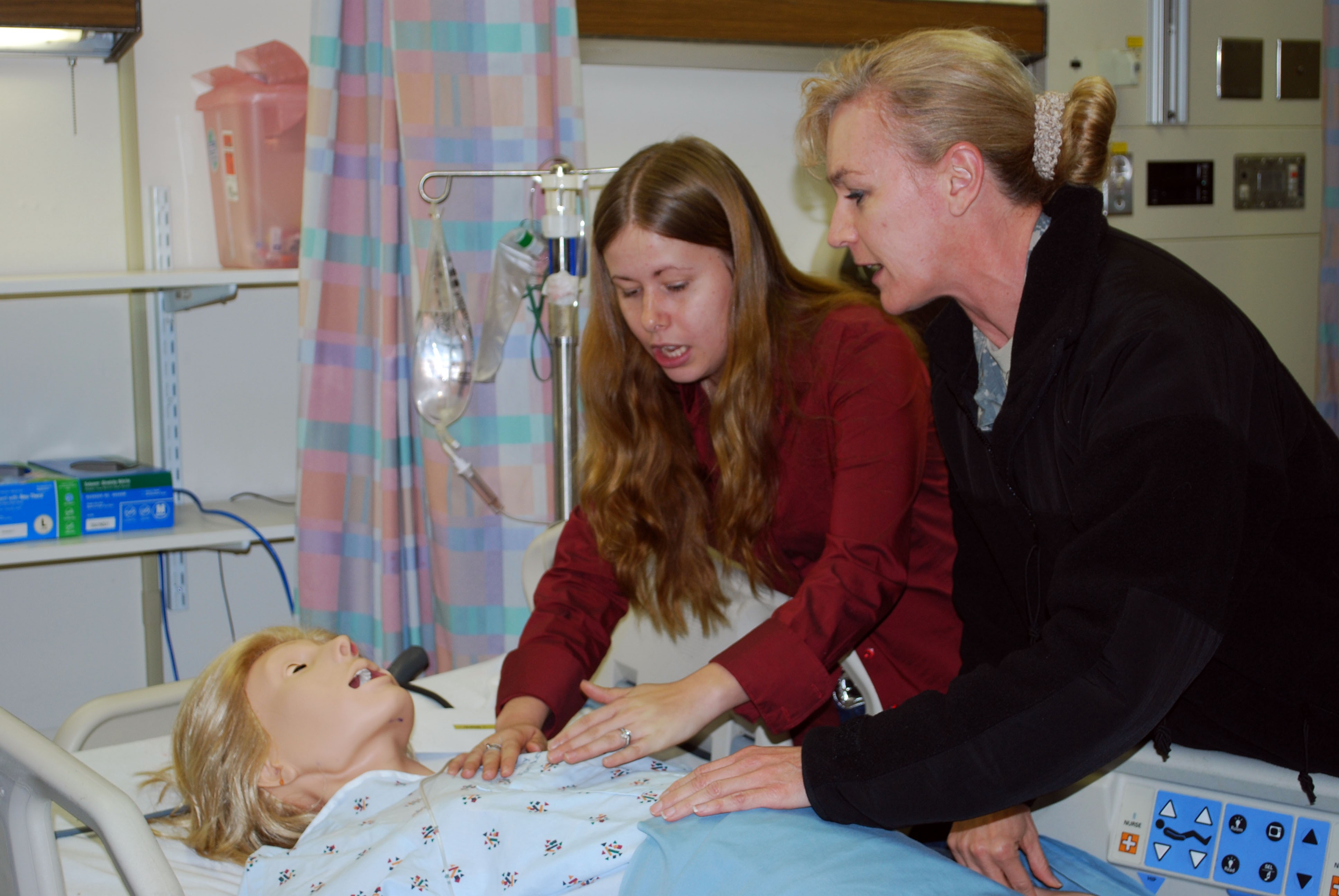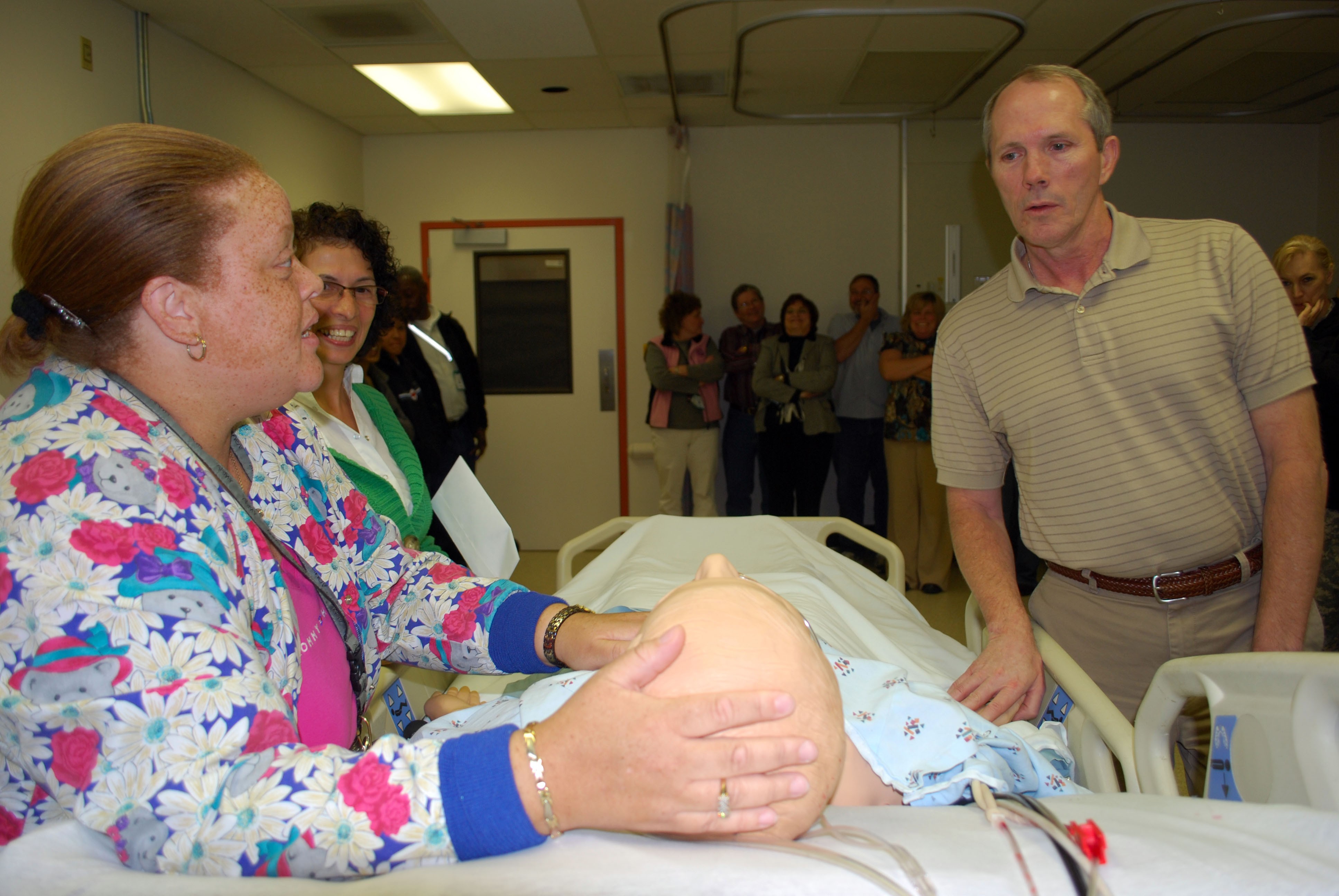MADIGAN ARMY MEDICAL CENTER, Tacoma, Wash. - "What's happening to her'" shrieked Michelle Munroe to the nurse standing over her pregnant friend. Munroe's friend had come to the emergency room complaining of a simple headache, but now she screamed again as her friend suddenly convulsed violently in a hospital bed. "I need help!" called the nurse, and in rushed an additional nurse and a doctor.
Munroe was becoming increasingly hysterical, and finally the doctor asked one of the nurses to escort her out of the room. "But my friend!" cried Munroe, as the nurse firmly gripped her arm and led her away from the bed.
"We're trying to help her," the nurse said calmly, as the medical team began to work intensely to save the patient and her baby.
The situation was an extremely critical one, which doctor and nurse medical teams face at Madigan Health System every day. Thankfully, this wasn't a real event, but a simulated one taking place at the Charles Anderson Simulation Center at Madigan Annex. The pregnant patient was a mechanical dummy, and Munroe was nurse-midwife Lt. Col. Munroe, one of the instructors involved in teaching Team Strategies and Tools to Enhance Performance & Patient Safety™.
These simulated exercises help to demonstrate how TeamSTEPPS™, developed by the DoD Patient Safety Program in collaboration with the Department of Health and Human Services' Agency for Healthcare Research and Quality, is a program that leads to improved clinical outcomes for patients, and encourages anyone - a nurse, a Family member, a medic - to speak up in a clinical environment when they feel something is not right. The program is a teamwork system designed to improve quality, safety and efficiency of health care.
During the simulation, Madigan staff members acting as doctors and nurses tried to determine what needed to be done for the pregnant patient.
At one point, a doctor ordered morphine to administer to the patient, but a nurse purposefully stopped him, knowing it was not the correct medication.
"TeamSTEPPS™ is incredible," said Col. (Dr.) Peter Napolitano, a TeamSTEPPS™ training instructor and Madigan's maternal-fetal medicine fellowship director. "The goal is to bring people together - everyone - to have them communicate."
At Madigan, TeamSTEPPS™ has been incorporated into the departments of family medicine, obstetrics and gynecology, pediatrics, emergency medicine, surgery and anesthesia and operative services.
The patient safety office, in conjunction with Madigan consolidated education, is coordinating an implementation and sustainment plan for those departments that have not been trained in TeamSTEPPS™.
The TeamSTEPPS™ program has also been launched at the University of Washington Medical Center. About 20 doctors, nurses, medics, neonatologists, obstetricians and clerks from the hospital's labor and delivery unit were trained at Madigan during the spring of 2009.
The program has been so successful at the university that the CEO of the medical center has committed to having the entire facility trained in TeamSTEPPS™. "We are taking a program that was DoD-wide and we're making it a nationwide program. The University of Washington will be the fifth team resource center for the civilian side responsible for teaching TeamSTEPPS™ to all the university programs on the west coast," Napolitano said. "The beauty of that is that we will now have, in close vicinity, two very large medical resource centers, partnered together."
Napolitano and Munroe even initiated TeamSTEPPS™ training in Iraq when they were deployed in 2008 with the 86th Combat Support Hospital.
It was the first time any type of team training had been done in an active theater of war. "It was very useful. But the challenge was to do this training while we were under attack, so we didn't do it the traditional way," Napolitano said. "We taught classes twice a week until eventually everybody in the hospital had been trained."
The program was established for the entire theater, and results showed significant decreases in patient safety reports, communication errors, needle sticks, and medication errors.
According to Napolitano, the training process continues, with about 2,000 medical personnel trained in Iraq and TeamSTEPPS™ subsequently being taught before deployment to the 10th, 14th and 28th Combat Support Hospitals.
Some form of team training for patient safety has been taught for years at Madigan. As far back as 1996, a teaching project called MedTeams, based on a safety program for aviation, was in place at every Army medical center.
In 2001, the project was reintroduced in Madigan's labor and delivery unit by Col. (Dr.) Peter Nielsen, the current chief of obstetrics and gynecology.
MedTeams, a Department of Defense project, then partnered with the Agency for Healthcare Research and Quality, the lead federal agency charged with improving patient safety and effectiveness of care throughout the United States, and the name was converted to TeamSTEPPS™. Madigan was then established as a team resource center, and became a "train the trainer" site for the TeamSTEPPS™ program.
More recently, Madigan has been supported by the TRICARE Management Agency as the first regional team resource center for the Western Regional Medical Command.
In a memo regarding the implementation of TeamSTEPPS™, Maj. Gen. Patricia D. Horoho, commander of the Western Regional Medical Command, wrote, "I see this opportunity to implement an effective communication process that will directly lead to increased patient safety. The implementation of TeamSTEPPS™ across all services is imperative for this program to function optimally, and will undoubtedly contribute to better communication and enhanced patient care."
(Julie Calohan works in the Madigan Healthcare System Public Affairs Office)




Social Sharing